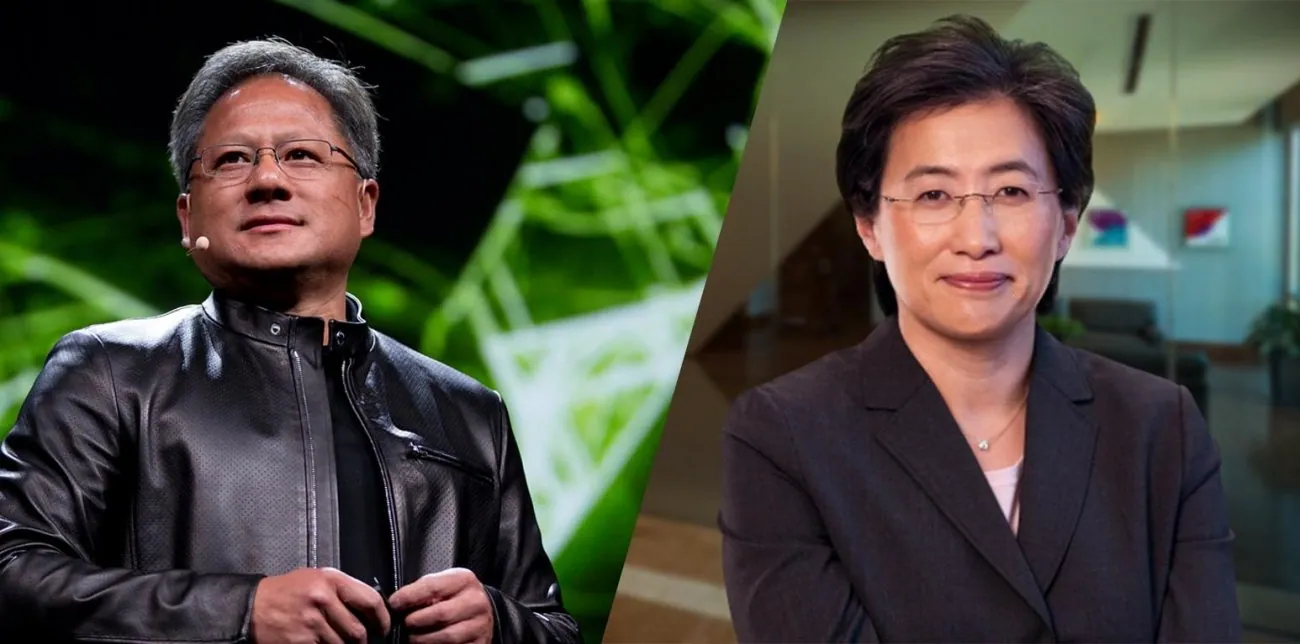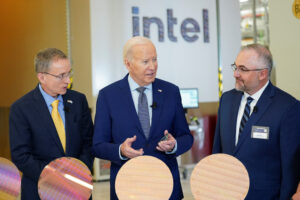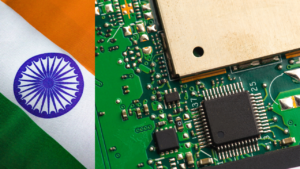The artificial intelligence (AI) market is rapidly expanding, and AMD, Advanced Micro Devices, is taking a unique approach to secure its share to compete with Nvidia.
Unlike its major competitor, NVIDIA, which has been a leader in AI with its powerful GPUs, AMD is navigating this competitive landscape through strategic partnerships and innovative solutions.
In this blog post, we’ll delve into AMD’s recent victories, particularly its partnerships with Oracle and IBM, and examine how these collaborations are helping AMD make significant inroads into the AI market.
Join Our WhatsApp News for updated information on semiconductors & AI
AMD’s Distinct Strategy (B2C Vs B2B)
While NVIDIA has been a dominant player in AI, AMD has chosen a different path to success. Instead of directly competing in the consumer AI market, AMD has been focusing on securing major contracts with cloud service providers and enterprises.
This strategic approach has allowed AMD to steadily strengthen its position and prepare for a more direct competition with NVIDIA in the future.
AMD is taking a different approach to AI than NVIDIA, and it seems to be working well for them. By focusing on securing major contracts with cloud service providers and enterprises, AMD has been able to build a strong foundation for its AI business.
This approach has also allowed AMD to avoid direct competition with NVIDIA in the consumer AI market, where NVIDIA is still the dominant player.
AMD’s AI strategy is based on three pillars:
- Hardware: AMD offers a broad portfolio of AI hardware, including CPUs, GPUs, and FPGAs. This allows AMD to provide its customers with the right hardware for their specific AI needs.
- Software: AMD is also investing heavily in AI software development. This includes open-source software libraries, tools, and frameworks. By providing its customers with easy-to-use software tools, AMD is making it easier for them to develop and deploy AI applications.
- Ecosystem: AMD is building a strong AI ecosystem by partnering with leading software vendors, cloud providers, and system integrators. This ecosystem provides AMD’s customers with access to a wide range of AI solutions and support.
AMD’s AI strategy is paying off. The company has won a number of major contracts with cloud service providers and enterprises.
AMD’s AI hardware is also being used in a wide range of AI applications, such as machine learning, natural language processing, and computer vision.
While AMD is not directly competing with NVIDIA in the consumer AI market, it is preparing for a more direct competition in the future.
AMD has recently released new AI hardware products that are designed to compete with NVIDIA’s products. AMD is also investing heavily in AI software development.
It is too early to say whether AMD will be able to challenge NVIDIA’s dominance in the AI market. However, AMD’s strategic approach is sound, and the company is making significant progress. It will be interesting to see how the AI market develops in the coming years.
Read More: Nvidia to Challenge Intel with Arm-Based PC Chips
Oracle’s Adoption of AMD
One of AMD’s most significant recent wins is Oracle’s decision to integrate AMD’s technology into its cloud services.
Oracle, a major player in cloud infrastructure, had been grappling with a shortage of NVIDIA GPUs, which had been impacting its business growth.
Despite these challenges, Oracle remains optimistic about its prospects and has made some strategic decisions to overcome the hurdles.
Read More: What is the future of manufacturing? Nvidia and Foxconn’s AI Factory
Oracle’s Strategic Shift
Oracle made a strategic decision to discontinue its in-house chip development for AI and high-performance computing.
These projects often require several years of development and research to yield meaningful results.
As a result, Oracle turned to AMD’s Instinct MI300X chips, which promise robust computational performance. In a remarkable development, Oracle is poised to become one of the first enterprises to deploy these AI chips in early 2024.
Read More: Intel Has a Surprising Solution to Break Nvidia Monopoly: Will It Work?
IBM’s Choice of AMD
Oracle’s pivot towards AMD is not an isolated case. IBM, another tech industry giant, is also looking beyond NVIDIA for its AI ambitions. IBM has chosen AMD’s NeuReality NR1 AI chips for its new AI inference platform.
These chips, produced using TSMC’s advanced 7-nanometer process technology, leverage AMD’s FPGA components, which are pivotal in delivering the required AI capabilities.
This strategic move significantly bolsters IBM’s AI inference platform, and deployment is set to commence in the fourth quarter of 2023.
Read More: Intel Has a Surprising Solution to Break Nvidia Monopoly: Will It Work?
Conclusion
AMD’s unique strategy in the AI market, which focuses on securing partnerships with major cloud service providers and enterprises, rather than directly competing with NVIDIA, is proving to be a strategic success. Its recent victories with Oracle and IBM underscore the company’s ability to secure substantial contracts and provide powerful AI solutions.
As AMD continues to grow and innovate, it is setting the stage for a compelling competition in the AI market, challenging the long-standing dominance of NVIDIA. It will be fascinating to witness how this dynamic unfolds in the coming years as both companies vie for their share of the burgeoning AI revolution. AMD’s approach is not just about keeping pace; it’s about strategically positioning itself for a future where AI plays an even more prominent role in our digital lives.








